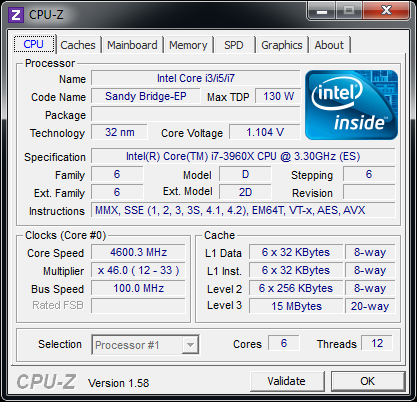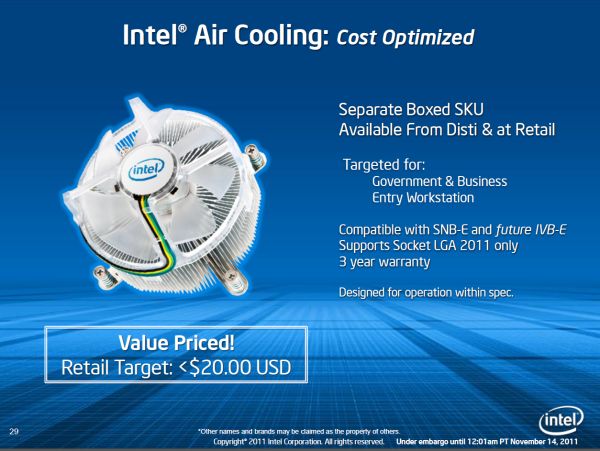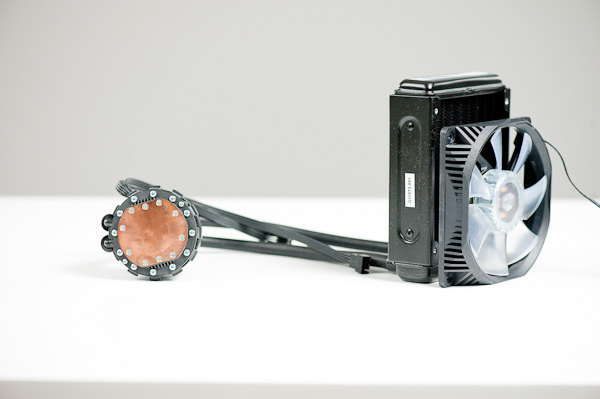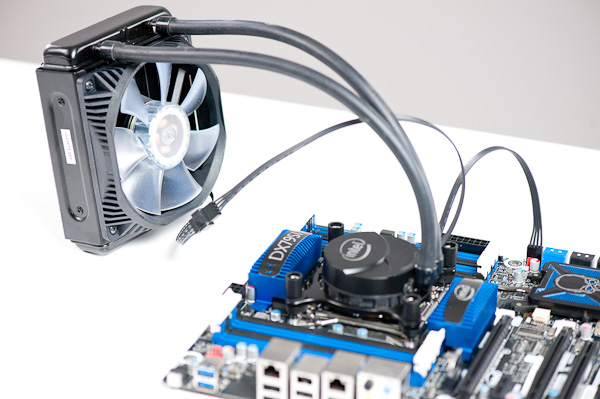Intel Core i7 3960X (Sandy Bridge E) Review: Keeping the High End Alive
by Anand Lal Shimpi on November 14, 2011 3:01 AM EST- Posted in
- CPUs
- Intel
- Core i7
- Sandy Bridge
- Sandy Bridge E
Overclocking
Sandy Bridge brought the motherboard's clock generator onto the 6-series chipset die. In doing so, Intel also locked its operation to 100MHz. While there was a bit of wiggle room, when combined with a locked processor, Intel effectively killed overclocking with most lower end Sandy Bridge chips.
For its more expensive CPUs, Intel offered either partially or fully unlocked (K-series) CPUs. The bus clock was still fixed at 100MHz, but you could overclock your processor by increasing its clock multiplier just like you could in the early days of overclocking.
With Sandy Bridge E, overclocking changes a bit. The clock generator is still mostly impervious to significant bus clock changes, however you're now able to send a multiple of its frequency to the CPU if you so desire. The options available are 100MHz, 125MHz, 166MHz and 250MHz.
Once again, wiggle room at any of these frequencies is limited so don't think we've moved back to the days of bus overclocking. You do get a little more flexibility, particularly with partially unlocked CPUs, but otherwise SNB-E overclocking is hardly any different from its predecessor.
Note that even if you select any of these options, the rest of the system still operates within spec. The multiplied bus clock is only fed to the CPU.

With a bit of effort I had no problems hitting 4.6GHz on my Core i7 3960X review sample. I had to increase core voltage from 1.104V to 1.44V, but the system was stable. While I could get into Windows at 4.8GHz and run a few benchmarks, the system wasn't completely stable.
No Cooler Included
None of the retail or OEM SNB-E parts include an Intel cooler in the bundle, a significant departure from previous CPUs. Presumably the cost of bundling a beefy cooler with these parts would've driven prices higher than Intel would've liked (remember you are getting a much larger die for roughly the same price as the outgoing Core i7 990X). Intel can also rationalize its decision against including any sort of cooler in the retail box by looking at the fact that many enthusiasts at this level opt for aftermarket cooling regardless.
Intel hasn't completely left SNB-E cooling up to 3rd party vendors however. There are two official Intel coolers available for use with SNB-E. The first is a < $20 heatsink that looks a lot like Intel's current coolers but with a couple of modifications (clear fan/shroud, retention screws instead of pegs). Intel states that this cooler is designed for operation within spec, meaning it could possibly limit overclocking attempts.

If you want an Intel branded overclocking solution, there's the RTS2011LC:

This is a closed loop liquid cooling solution similar to what AMD introduced alongside its Bulldozer CPU and similar to what many 3rd party cooling companies already offer. Intel expects its liquid cooling solution to be priced somewhere in the $85 - $100 range.
These closed loop liquid coolers are great primarily for getting away from the tower-of-metal heatsinks that have grown in popularity over the past several years. The radiator is a too small to compete with more traditional water cooling systems, but it can be a good gateway drug for the risk averse.











163 Comments
View All Comments
yankeeDDL - Monday, November 14, 2011 - link
I'm with you xpclient.I will never understand Microsoft's fanboys. Why do they expect the OS to make such huge impact on the benchmarks?
It's like for motherboards: you can differentiate for ease of use, stability, features, supported hardware ... but the benchmarks, will substantially be the same.
XP trails Windows7 on multi core because it was never designed to support so many cores, and MS has no interest in updating it.
Per Hansson - Monday, November 14, 2011 - link
Hi, what resolution and in game graphical settings where used for the World of Warcraft gaming test?It always amazes me how well that game scales with super high-end CPU's, but if it's at just a silly low resolution it does not really matter, so, which is it? (This isn't mentioned in "bench" either....)
Per Hansson - Monday, November 21, 2011 - link
Here is Anand's reply to this question incase anyone cares ;)---
1680 x 1050, 4X AA, all detail settings maxed (except for weather) :)
Take care,
Anand
Mightytonka - Monday, November 14, 2011 - link
Typo on the second page. Should read RST (Rapid Storage Technology), right?Ocire - Monday, November 14, 2011 - link
Nice review! :-)If you want to test PCIe bandwidth, you could use the bandwidth-test that comes with the CUDA SDK. It's easy to setup, and you can also test configurations with multiple GPUs. You should get quite reliable results for pure PCIe Gen.2 performance with that.
It would be really interesting to get some performance numbers for PCIe as that is the bottleneck in quite a few GPU-computing scenarios.
Cheers!
LancerVI - Monday, November 14, 2011 - link
Sounds like a great, enthusiast proc, married to a mainstream chipset at enthusiast prices.That means 'no joy' for me.
I guess I'll be hanging on to my little i7 920 that could for a bit longer. Going on 4 years now. That's unheard of for me!!!
hechacker1 - Monday, November 14, 2011 - link
I'm also going to hang onto the i7 920. Overclocked the x58 platform can still compete with the best of of Sandy Bridge for almost any workload. Sure we're missing some IPC and power enhancements, but nothing worth spending serious cash on.What I'm looking at now is the Gulftown prices. I'm hoping they come down from the $1000 Extreme part, and perhaps we get an affordable 6-core chip for the X58 platform.
I'd be happy to stick with Gulftown until we see affordable 8 core parts, or major IPC improvements.
Makaveli - Monday, November 14, 2011 - link
the 980 non X version is already going for $550This is your next upgrade, as is mine i'm also on a 920.
I doubt that price will drop any lower.
hechacker1 - Monday, November 14, 2011 - link
Yeah I'm going to be watching the prices closely for a while.At $550 for the lowest end Gulftown on newegg, it's still not affordable for me.
It's still cheaper than the intro prices of Sandy Bridge-E including a new motherboard though.
I'll have to watch forums closely for people wanting to sell their chips, I imagine you can snag one used for a good deal.
davideden - Monday, November 14, 2011 - link
I currently have a Core i7 2600K LGA 1155 processor. I am assuming that I won't be able to use this with the new LGA 2011 socket on the new Sandy Bridge E motherboards. Will there be any cheaper processors in the near future that are at the price point of the Core i7 2600K that are compatible? I was disappointed with not being able to utilize triple channel with my memory or being able to use all my sticks of ram with the current LGA 1155 motherboards. The quad channel ram along with the 8 slots have me most excited for the new platform as I do video editing/motion graphics/3D work. Thanks!